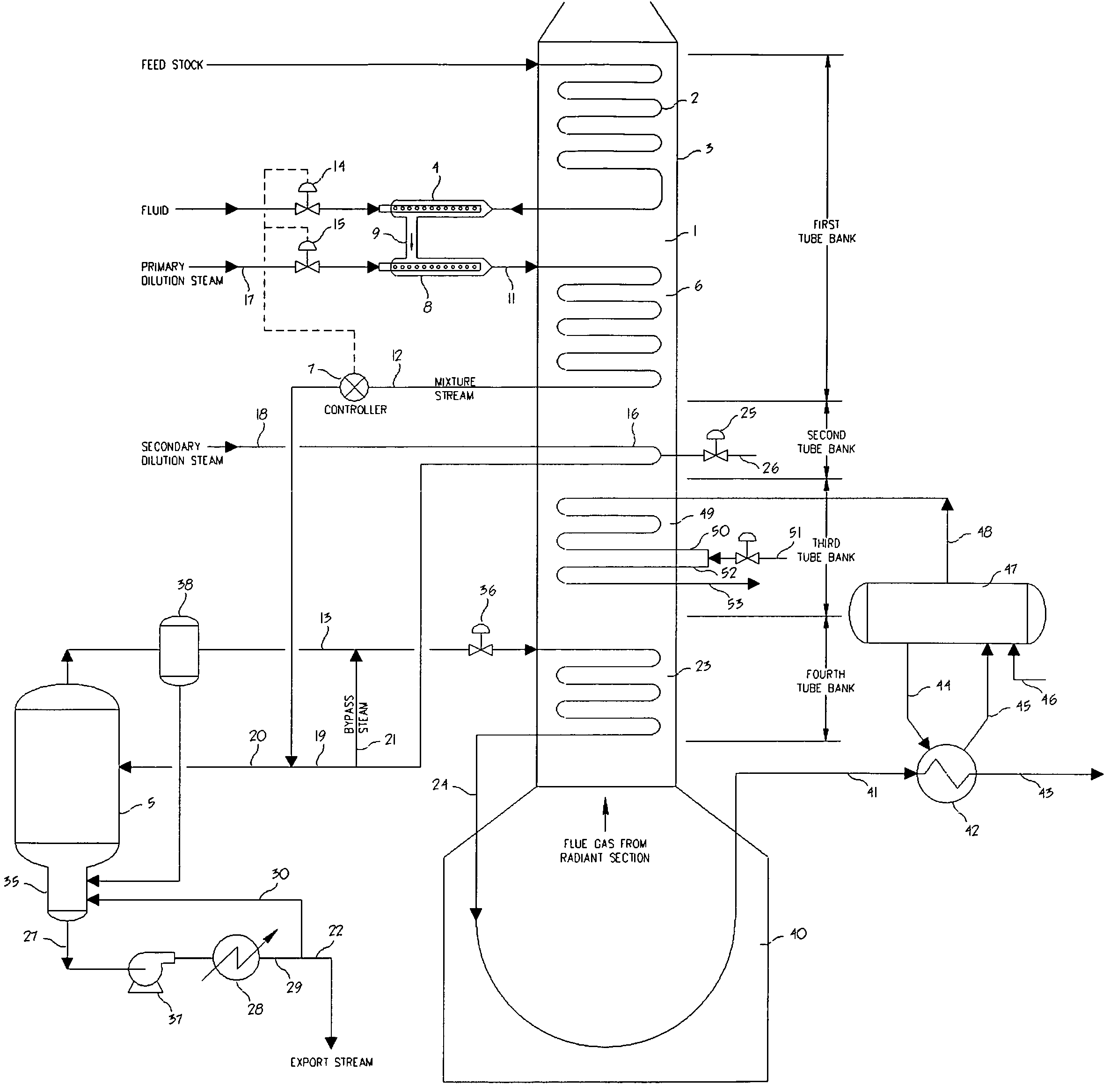Process for steam cracking heavy hydrocarbon feedstocks
a hydrocarbon feedstock and steam cracking technology, applied in the field of hydrocarbon cracking, can solve the problems of contaminated naphthas, rapid coking in the radiant section of the furnace, and fouling in the transfer line exchanger
- Summary
- Abstract
- Description
- Claims
- Application Information
AI Technical Summary
Benefits of technology
Problems solved by technology
Method used
Image
Examples
Embodiment Construction
[0031]Unless otherwise stated, all percentages, parts, ratios, etc., are by weight. Unless otherwise stated, a reference to a compound or component includes the compound or component by itself, as well as in combination with other compounds or components, such as mixtures of compounds.
[0032]Further, when an amount, concentration, or other value or parameter is given as a list of upper preferable values and lower preferable values, this is to be understood as specifically disclosing all ranges formed from any pair of an upper preferred value and a lower preferred value, regardless whether ranges are separately disclosed.
[0033]As used herein, non-volatile components are the fraction of the hydrocarbon feed with a nominal boiling point above 1100° F. (590° C.) as measured by ASTM D-6352-98 or D-2887. This invention works very well with non-volatiles having a nominal boiling point above about 1400° F. (760° C.). The boiling point distribution of the hydrocarbon feed is measured by Gas C...
PUM
| Property | Measurement | Unit |
|---|---|---|
| temperature | aaaaa | aaaaa |
| temperature | aaaaa | aaaaa |
| temperature | aaaaa | aaaaa |
Abstract
Description
Claims
Application Information
 Login to View More
Login to View More - R&D
- Intellectual Property
- Life Sciences
- Materials
- Tech Scout
- Unparalleled Data Quality
- Higher Quality Content
- 60% Fewer Hallucinations
Browse by: Latest US Patents, China's latest patents, Technical Efficacy Thesaurus, Application Domain, Technology Topic, Popular Technical Reports.
© 2025 PatSnap. All rights reserved.Legal|Privacy policy|Modern Slavery Act Transparency Statement|Sitemap|About US| Contact US: help@patsnap.com


